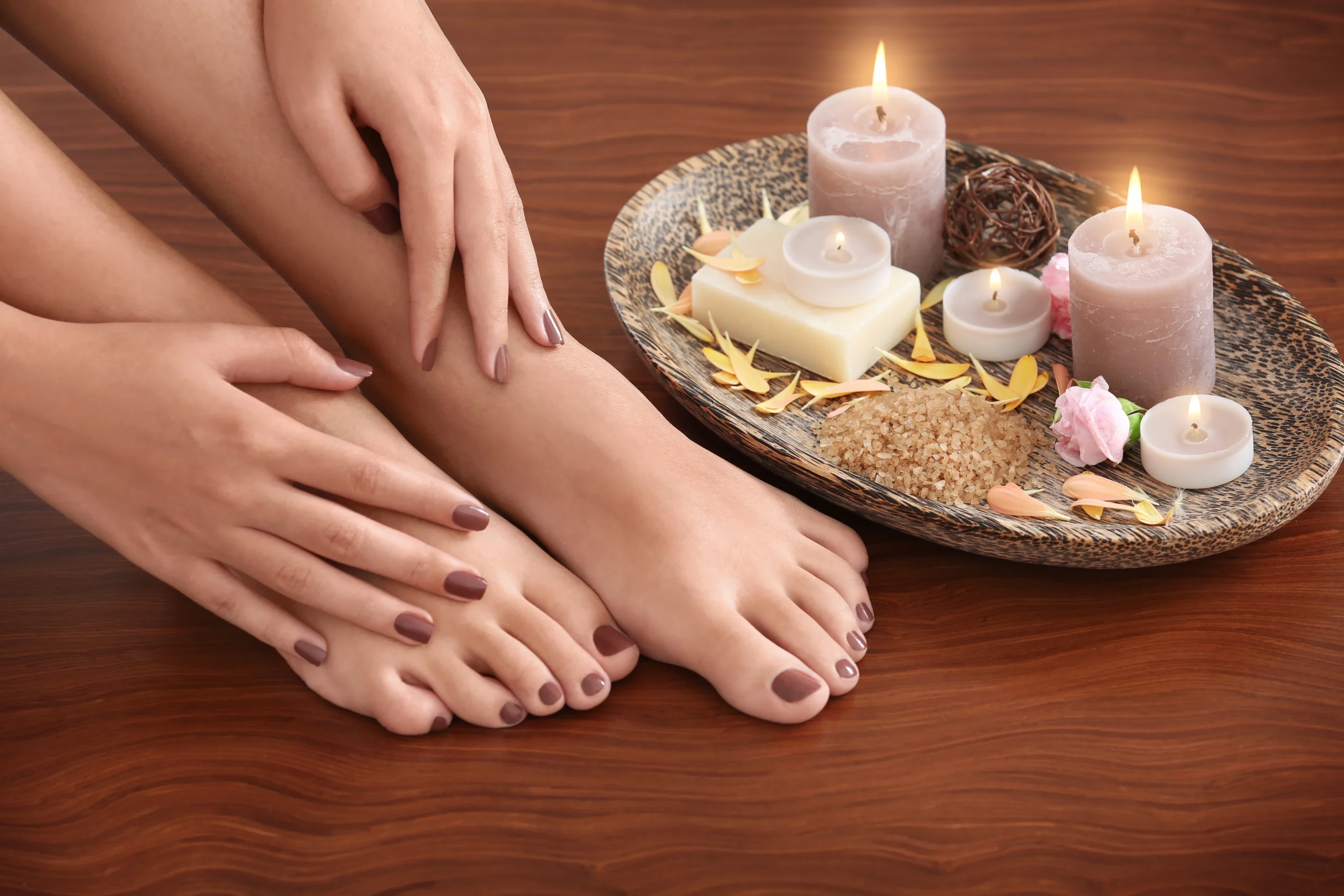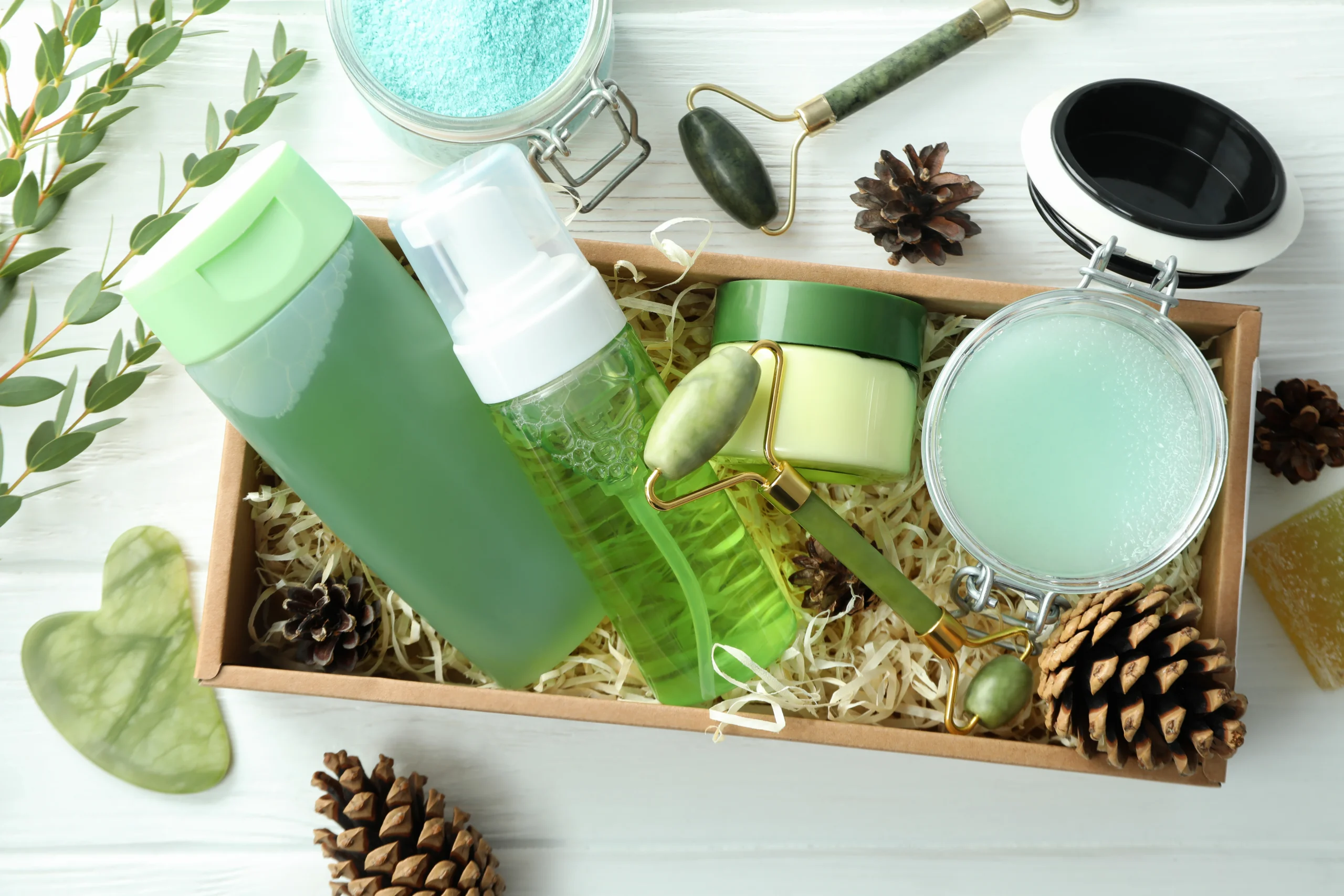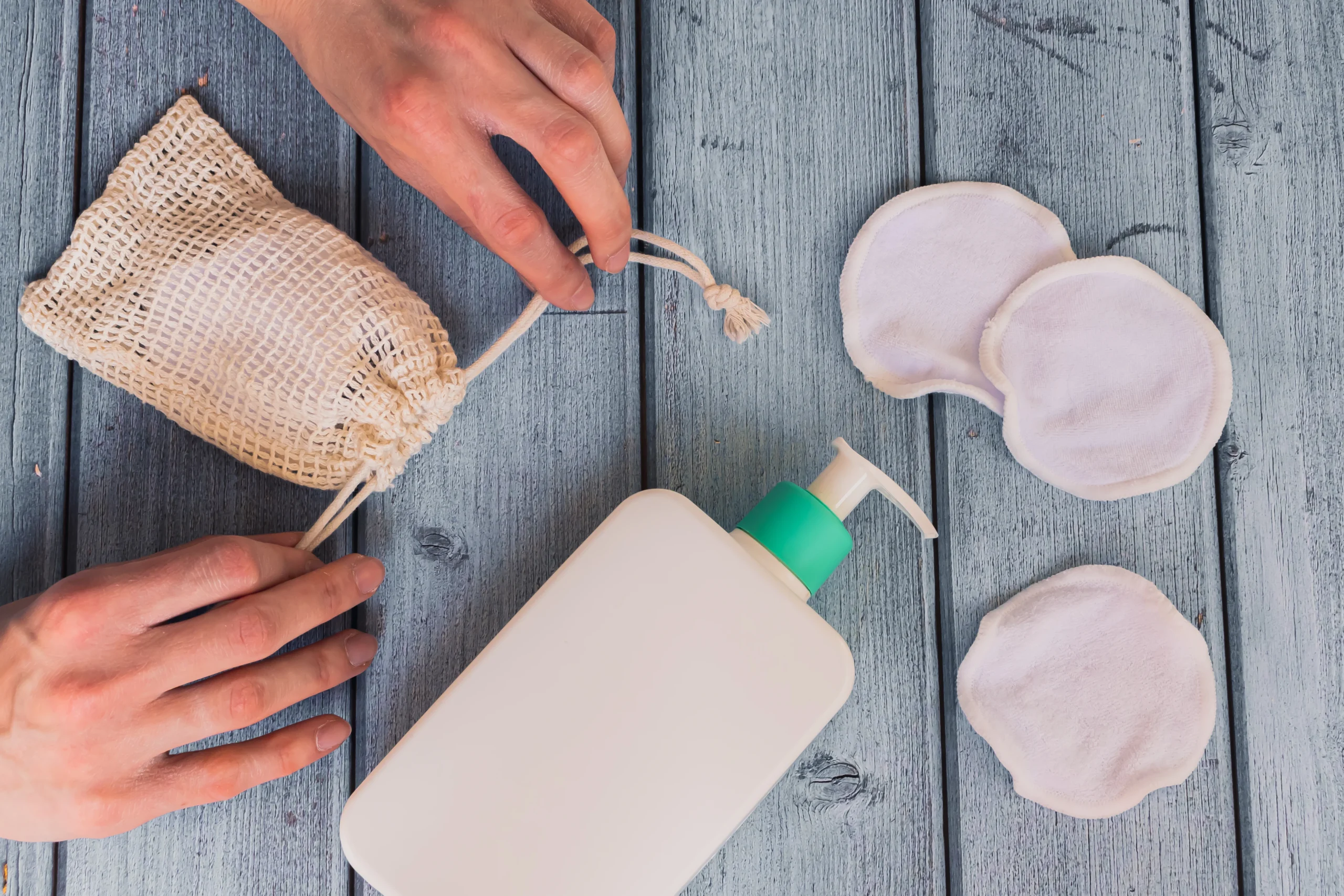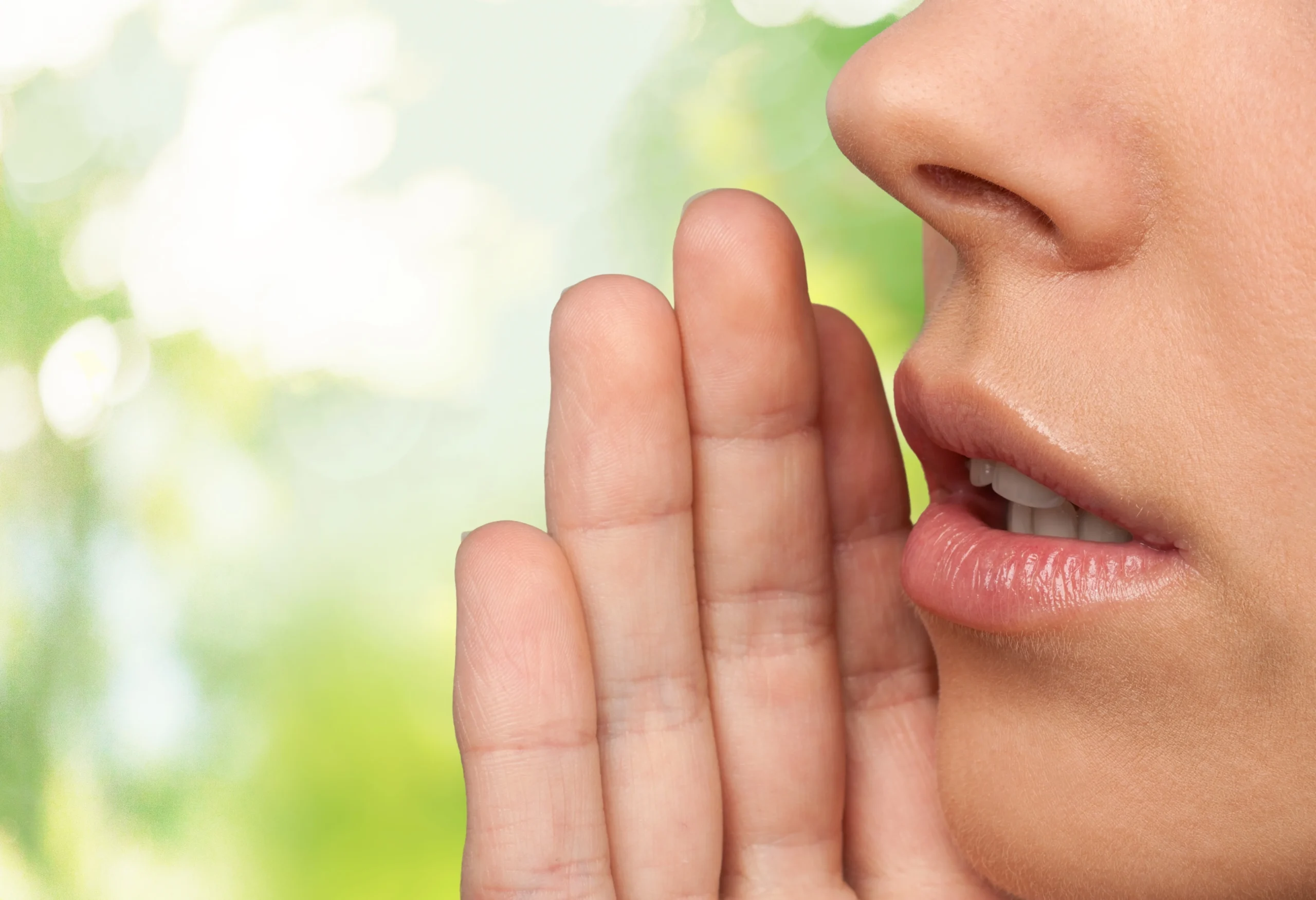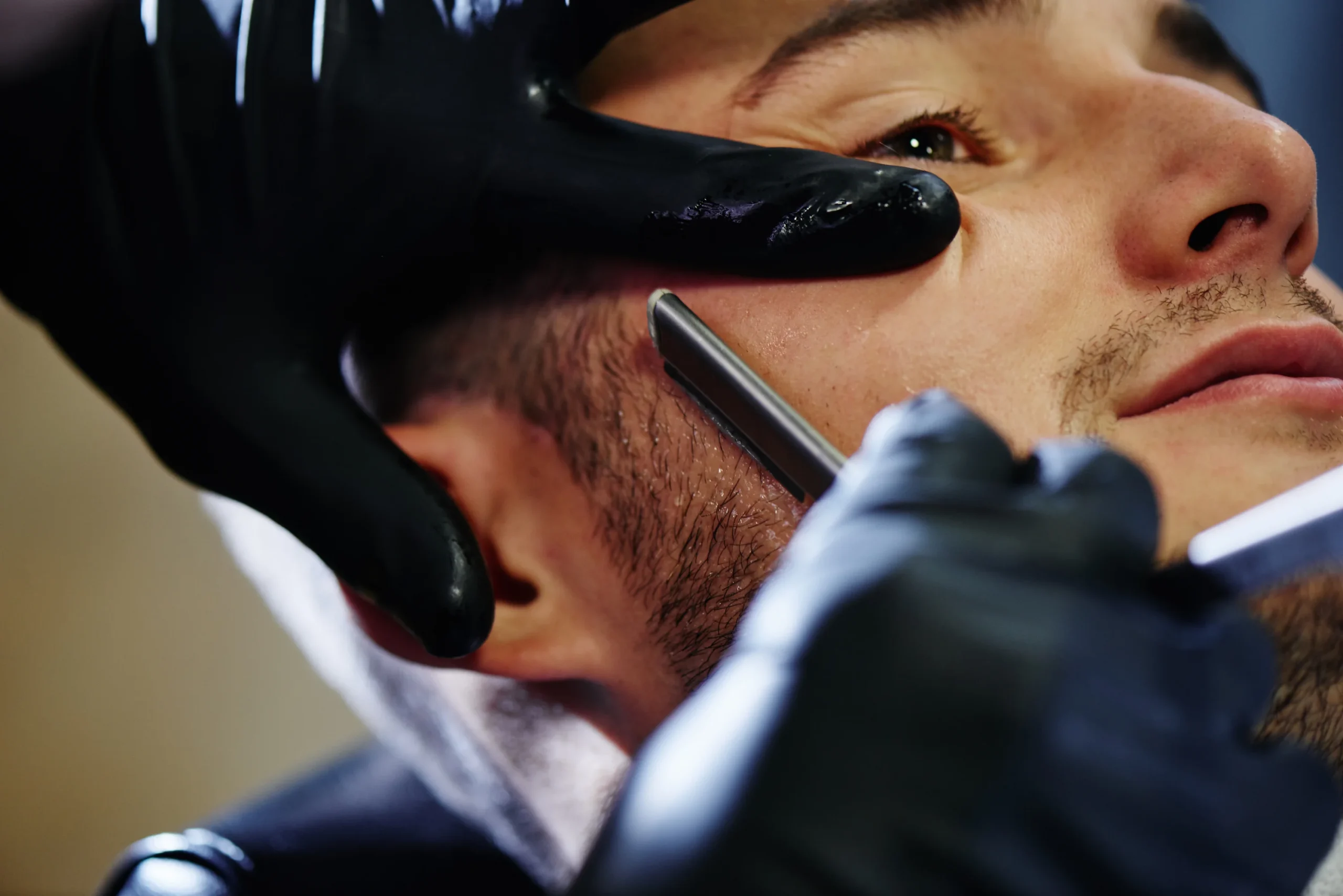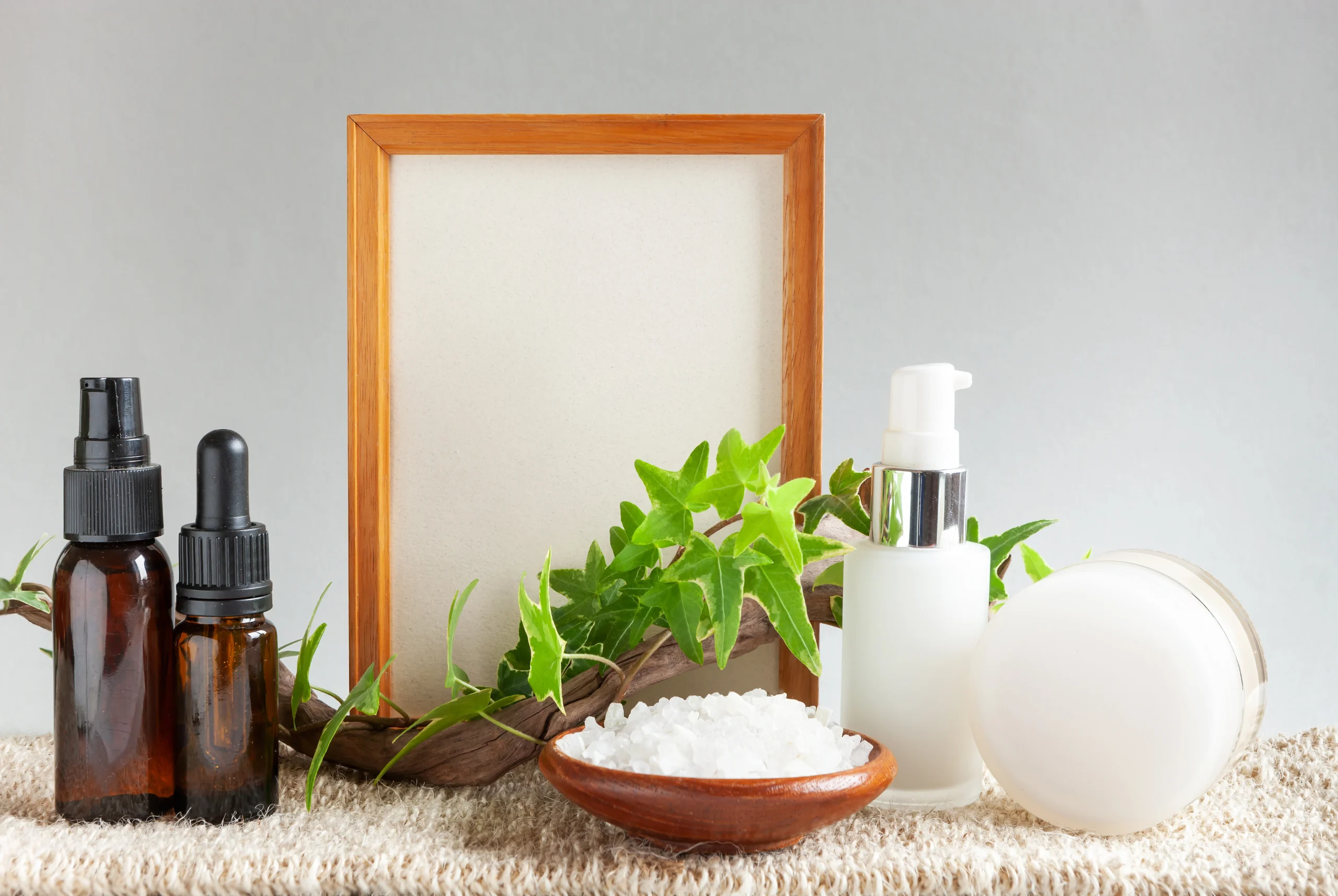Why Hand and Foot Care Deserves Your Daily Attention
Hand and foot care isn’t just for beauty – it’s integral to health, hygiene, and self-esteem. As long as we’re awake, our hands and feet work tirelessly to help us with everything we do. But surprisingly, these hardworking parts are the ones that get the most neglect. Cracked, dry cuticles, peeling skin, and brittle nails aren’t just unsightly-they’re a sign of serious body care and attention.
A regular hand and foot care routine improves appearance, prevents infections, delays premature aging, and improves mobility. When your skin is smooth and hydrated, your nails are neat, and the soles of your feet are soft, you feel confident and comfortable. Regular care also increases circulation and reduces stress, which acts like a mini detox for your organs. Think of it as an investment—like brushing your teeth or washing your face.
The benefits don’t end there. Your hands and feet are constantly attacked by environmental pollution, harsh soaps, UV rays, and extreme weather. That’s why choosing the proper care techniques and products is essential. It’s not enough to wash your hands occasionally and apply moisturizer—you need to understand your skin’s needs, from exfoliation to nourishment.
In this guide, we’ll discuss the secrets of hand and foot care. You’ll learn 11 proven tricks to keep your skin glowing, your nails healthy, and your confidence high. Let’s start on your path to soft, strong, and beautiful hands and feet – because every step and touch should symbolize care.
Skin Structure and Common Problems
To be proficient in hand and foot care, you need to understand the basic structure of the skin. The skin on the hands and feet is thicker than on other body parts, especially on the palms and soles, where friction is most significant. However, it also has fewer oil glands, which makes it dry out more quickly. That’s why your hands get rough after you wash dishes, and your feet get cracked in the winter.
The most common skin problems on the hands and feet are:
- Dryness and Flaky Skin: Due to a lack of enough moisturizer, chemicals, and weather.
- Cracked Skin: Due to stress, dry skin, and lack of exfoliation.
- Calluses and Corns: Caused by friction or pressure, especially from tight shoes.
- Fungal Infection: Fungus grows in a moist environment inside the feet.
- Nail Problems: Brittle nails, yellowing, or ingrowing nails are signs of nutritional deficiency or improper care.
These problems affect your appearance and can cause discomfort and infection if not treated properly. Fortunately, a proper hand and foot care routine can help prevent or reverse these problems.
In the following chapters, we will learn how to create a nourishing routine by combining science, self-care, and intelligence. Are you ready to properly care for your hands and feet? Let’s enter the power of care together, one step at a time.
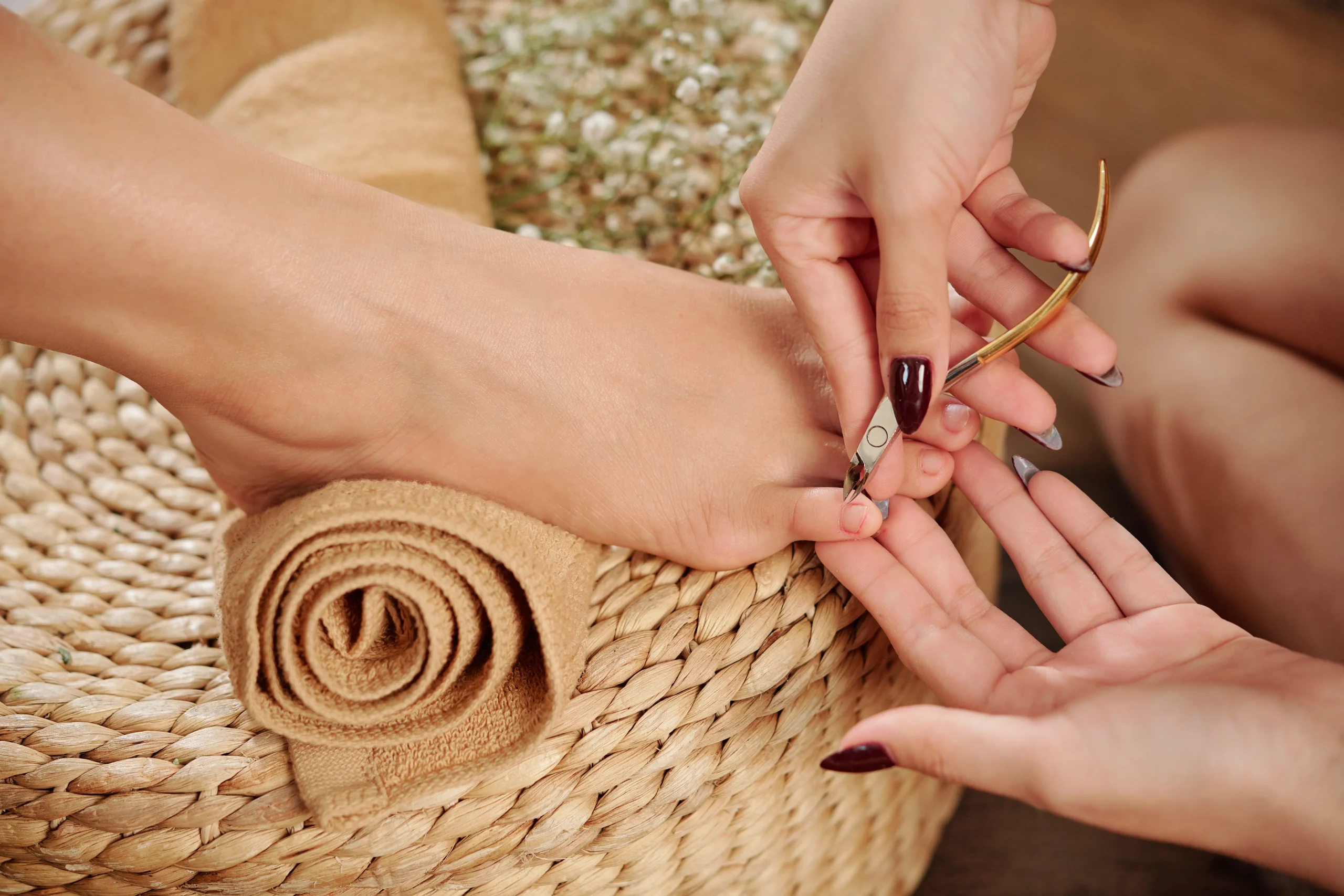
The Science Behind Hand and Foot Care
How The Environment Affects Skin Health
Unlike other body parts, your hands and feet face unique daily environmental stresses. These organs are constantly exposed to various external factors – such as rough surfaces, extreme temperatures, chemical detergents, and harmful UV rays. This daily exposure weakens the skin’s natural protective layer and breaks down essential proteins like collagen and elastin. As a result, hand and foot care is not just a cosmetic practice, but a biological necessity.
The skin on the hands and feet has fewer sebaceous (oil-producing) glands, making it dry out more quickly than other body parts. If this moisture is not replenished, it can become cracked, scaly, and bleed. Additionally, feet are typically confined to socks and shoes for long periods, creating a dark, damp environment—a breeding ground for bacteria or fungi. On the other hand, frequent hand washing and use of alcohol-based sanitizers strip away natural oils, leading to redness, dryness, and irritation.
Scientific research suggests that regular hydration and using occlusive ingredients (such as petroleum jelly, shea butter, or silicone-based creams) restore the skin’s protective layer and increase elasticity or suppleness. Exfoliation, or removing dead cells, also helps moisturizer penetrate deeper into the skin and improves effectiveness.
Additionally, exfoliation or removing dead cells helps moisturizer penetrate deeper into the skin and increases effectiveness.
The Mechanism of Hydration and Exfoliation
Knowing what’s happening beneath the skin is essential to understanding hand and foot care.
Hydration isn’t about applying lotion – it’s about protecting the stratum corneum, the outermost layer of skin. This layer of skin. This layer comprises dead cells and lipids, forming a natural shield together. When properly moisturized, it stays flexible and protects against germs, toxins, and allergens. But if it becomes dry, that protection breaks down, leading to itching, cracking, and accelerated aging.
Original Hydrators Such As:
- Hyaluronic Acid
- Urea
- Glycerin
- Lactic Acid
These ingredients act as humectants, absorbing Water from the environment or within the skin. Since the skin on the hands and feet is thick and tough, these ingredients can penetrate deep into the skin to be effective.
Exfoliation or Scrubbing Helps In Cell Regeneration:
- Physical exfoliants (such as sugar scrubs, pumice stones).
- Chemical exfoliants (such as salicylic acid or glycolic acid).
These processes remove dead cells, which can become rough skin or calluses. After exfoliation, moisturizer can reach a new, receptive level.
Exfoliating 1-2 Times a Week:
- Roughness and blemishes are reduced.
- Serums and moisturizers work well.
- Thick calluses or peeling are prevented.
- Blood circulation is increased with massage-based scrubs.
According to science, applying an occlusive moisturizer immediately after bathing or exfoliating immediately after bathing or exfoliating is most effective. It locks in moisture, increases suppleness, and protects skin against environmental damage.
Hand and foot care is not just about comfort – it’s about scientifically strengthening your skin’s natural defenses. With the proper knowledge and practice, you can turn your routine into an effective scientific ritual that leaves skin soft, firm, and radiant.
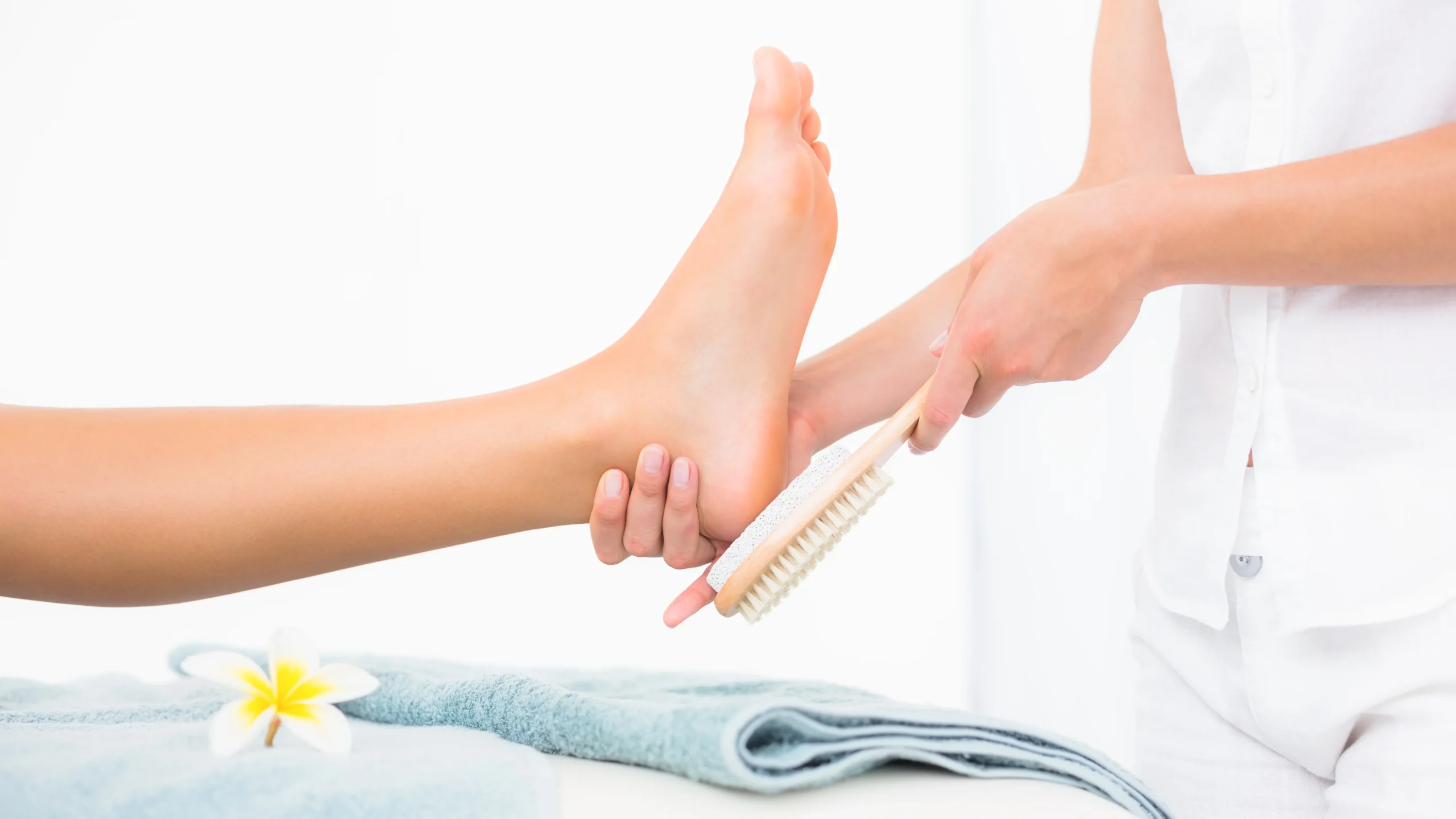
Step-by-Step Routine for Daily Hand and Foot Care
Regular hand and foot care habits are the most effective way to maintain beautiful, healthy skin. An occasional treatment or spa may be nice, but small daily care routines pay off the most in the long run. Spas may feel good, but the little things in life pay off the most in the long run. With just a few minutes a day, you can nourish, protect, and revitalize the skin on your hands and feet – avoiding dryness, irritation, or signs of premature aging. Let’s look at a scientific and expert-advised routine you can start today.
Step 1: Clean Properly
The first step in any skincare routine is proper cleansing. But not all soaps are created equal. Overly scented or harsh soaps can strip the skin of its natural oils, leaving it dry and cracked—especially on the heels and knuckles.
Tips for Proper Cleaning:
- Use a mild, pH-balanced cleanser. Choose products containing aloe vera, oat extract, or ceramides.
- You should wash your hands several times a day – especially before meals, after using the toilet, and after touching public places.
- Clean your feet at least once daily, especially at night, to remove sweat and dirt accumulated throughout the day.
- Pay attention to the gaps between your fingers that accumulate the most.
- Use lukewarm Water – excessively hot Water dries out the skin even more.
Clean skin is not only healthy, it also increases the effectiveness of moisturizers and treatments.
Moisturize at The Right Time
The “real magic” of hand and foot care begins after cleansing and moisturizing. This repairs the skin’s protective layer, locks in moisture, and prevents itching, peeling, or cracking.
When to Moisturize?
- Immediately after washing hands and feet.
- Before going to bed at night (especially for the feet).
- Whenever skin feels tight, rough, or flaky.
What to Use?
Choose a moisturizer rich in emollients and humectants, such as:
- Urea (great for cracked heels)
- Glycerin
- Shea Butter
- Lanolin
- Hyaluronic Acid
For a Deep Night Treatment:
Apply a thick layer of cream and sleep with cotton socks or gloves. This will lock in moisture and leave your skin soft and smooth.
Pro Tip:
Apply lotion or cream in a circular massage, especially around cuticles, heels, and knuckles. This increases circulation and helps dry skin heal faster.
Cuticle and Nail Care
No matter how much you care for your hands and feet, it is incomplete without caring for your nails. New nails grow in the cuticle, so it should not be ignored or cut.
What To Do for Daily Nail Care
- Use cuticle oil or petroleum jelly.
- Wet it with warm Water and gently push back the cuticles; don’t cut them.
- Cut nails straight across (especially toenails to reduce the risk of ingrown nails.
- Smooth the edges with a glass or emery board.
- Keep nails clean and dry- helps prevent fungal infections.
Avoid Dangerous Habits:
Don’t use metal tools under your nails; this can cause the nail to separate from the bed. Instead, wash your hands and feet with a soft brush.
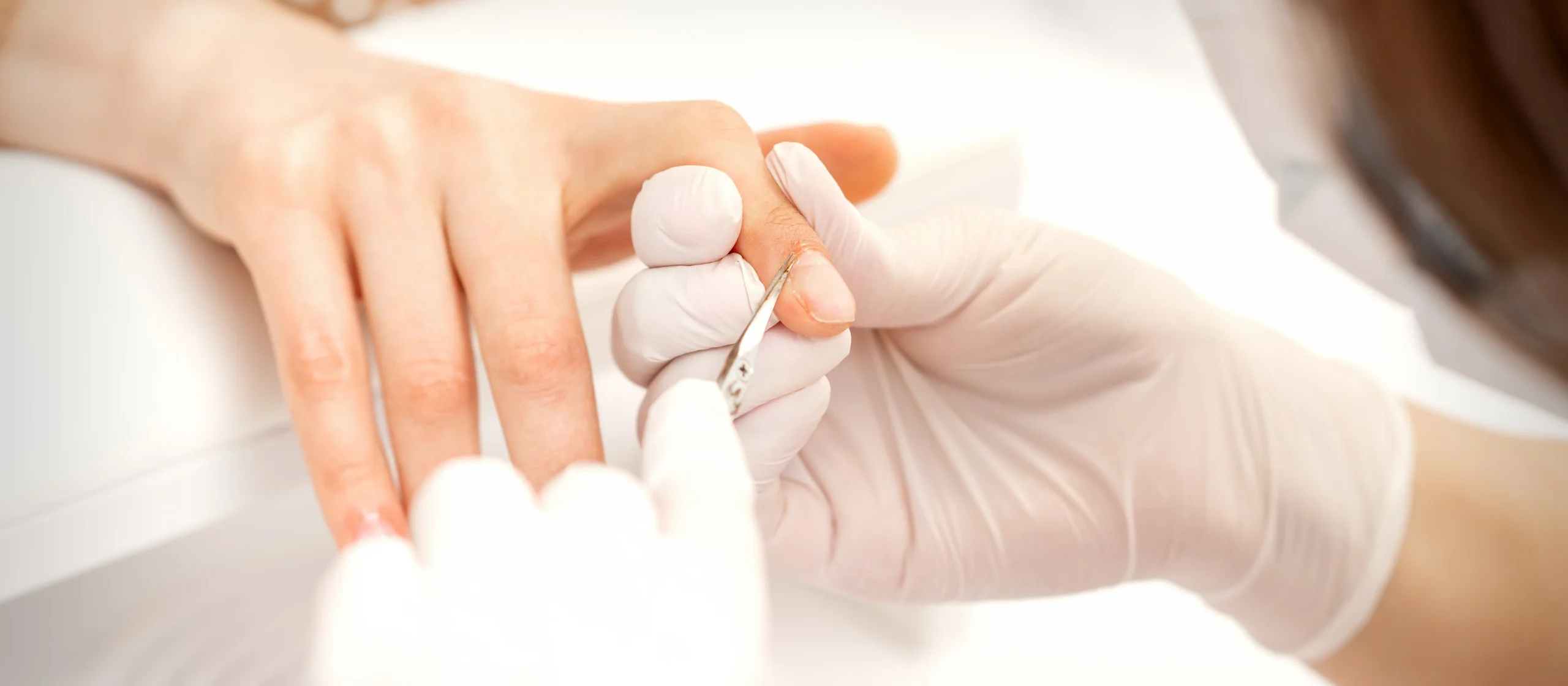
Deep Care: Weekly and Monthly Treatments
Daily hand and foot care lays the foundation for healthy skin. But a special treatment once a week or a month can take your skin a step further. This treatment is primarily helpful in solving problems, such as cracked heels, thick calluses, rough cuticles, or dull skin, that cannot be fully cured by daily moisturizing or cleansing alone. Think of them as your skin’s “reset button.” A little extra time once or twice a week can significantly improve skin texture, radiance, and elasticity.
Exfoliation and Scrubbing Techniques
Exfoliation is essential to remove dead skin cells accumulated over time, especially on the soles of your knuckles. It helps your skin produce new cells and improves the absorption of other products.
For Hands:
- Use a gentle sugar or oatmeal scrub 1-2 times a week.
- Pay special attention to the back of your hands and around your nails.
- Scrub in circular motions for 1-2 minutes, then rinse with lukewarm Water.
- Follow with a deeply hydrating cream or hand mask.
For The Feet:
- Choose a scrub that contains pumice stone granules, sea salt, or walnut shells.
- Soak your feet in warm Water for 10-15 minutes before scrubbing.
- Pay attention to the heels, balls of your feet, and the sides of your toes- these are where calluses tend to form.
- Rinse and pat dry, then use a thick urea-rich foot cream.
Pro Tip:
- Use a pumice stone or foot file once a week to remove hard skin on your heels.
- Use on damp skin and don’t apply too much pressure – otherwise, you can damage the healthy skin.
Home Spa Treatments (DIY)
This weekly or monthly ritual can be your spa moment that enhances your beauty on the outside and soothes and heals you from the inside. It helps reduce inflammation, stress, and discomfort.
Relaxing Hand Soak Recipe:
- 1 Bowl or warm Water
- 1 Tablespoon olive oil
- 1 Tablespoon honey
- ½ Juice of lemon
Soak your hands for 10 – 15 minutes. This mixture softens cuticles, brightens the skin, and removes dryness. After soaking, apply a thick moisturizer or shea butter mask, and wear cotton gloves for 30 minutes (or overnight).
Refreshing Foot Bath:
- 1 Basin or warm Water.
- ½ Cup Epsom salts.
- A few drops of peppermint or lavender essential oil.
- (optional) 1 tablespoon of baking soda for detoxification.
Soak Your Feet in Water for 15 – 20 minutes.
Epsom salt reduces swelling and fatigue, and essential oils provide an aroma. After soaking, dry your feet, exfoliate, and massage with a nourishing cream or oil.
Hand and Foot Mask
A hydrating mask once a week can help restore lost moisture to your skin. You can also use emollient-rich gloves and socks in the market, or make your own at home.
DIY Mask Ingredients:
- Avocado + Honey Moisturizes
- Banana + Yogurt Softens skin.
- Coconut Oil + Aloe Vera Heals cracked skin.
Apply the mask, wrap it in plastic or gloves/socks, and leave it on for 20-30 minutes.
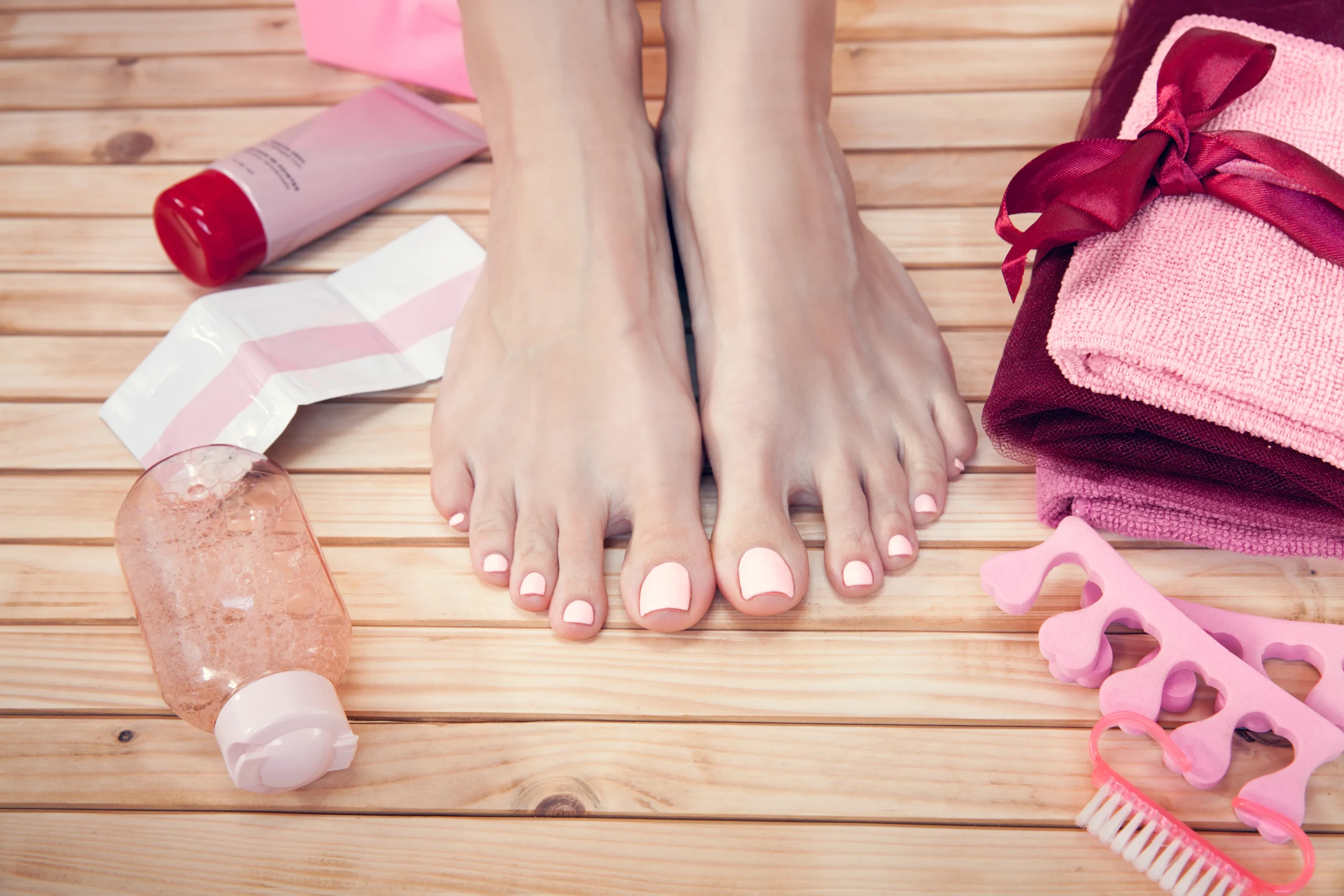
Hand and Foot Care According to Different Skin Types
Your skin is as unique as your fingerprints, including the skin on your hands and feet. Suppose you suffer from rough, oily, or hypersensitive skin. In that case, customizing your hand and foot care accordingly is essential for long-term results. Like facial skin, hands and feet benefit from ingredients, treatments, and textures that match your natural skin characteristics.
Let’s examine how to personalize hand and foot care according to skin type and age.
Dry Skin vs. Oily Skin: Different Treatment Plans
Rough Skin Care for Hands and Feet
Dry skin on the hands and feet is a widespread problem, especially in the winter or for those who wash their hands frequently or use sanitizers. Symptoms include tightness, flaking, and cracking, especially on the heels and knuckles.
Best Tricks for Dry Skin:
- Use a fragrance-free, creamy cleanser that doesn’t strip natural oils.
- After cleansing, use a rich moisturizer with shea butter, cocoa butter, or urea.
- Apply petroleum jelly at night and sleep in cotton socks or gloves.
- Don’t exfoliate more than once a week – dry skin is delicate, and over-exfoliation can irritate it.
- Use lukewarm Water instead of hot Water.
Things to Watch Out For:
- Urea
- Ceramide
- Hyaluronic Acid
- Lactic Acid (Low Concentration)
- Oat Extract
Age-Based Hand and Foot Care
Your skin loses collagen and elastin, which can also not retain moisture as you age, so your skincare routine must change.
Teen and Young Adult Care (Ages 13-25)
Almost no one values hand and foot care at this age, but it’s most effective in developing good habits.
- Use a light moisturizer and a gentle exfoliant.
- Protecting your skin from the sun- SPF is important not just for your face but also for your hands.
- Wear breathable shoes to practice good hygiene and control sweat and excess oil.
- Keep your nails clean to prevent fungal infections or hangnails.
Adult Care (Ages 26-45)
During this time, the skin begins to take on the effects of stress, aging, and dehydration-especially if you live a busy life or work in a harsh environment.
- Include anti-aging ingredients like retinol, peptides, and antioxidants (vitamins C and E).
- Focus on hydration, exfoliation, and protection.
- Use a brightening hand cream if you have sunburn or discoloration.
- Consider getting a paraffin wax treatment or chemical foot peel once a month.
Mature Skin Care (Age 46 and Above)
At this age, the skin becomes thinner, drier, and more sensitive, so it needs to retain more softness and moisture.
- Moisturize deeply multiple times a day.
- Use sunscreen daily; hands are the first place signs of aging show.
- Avoid using harsh scrubs. Instead, use enzyme-based exfoliators or soft cloths.
- Include collagen-boosting massages or treatments to maintain skin elasticity.
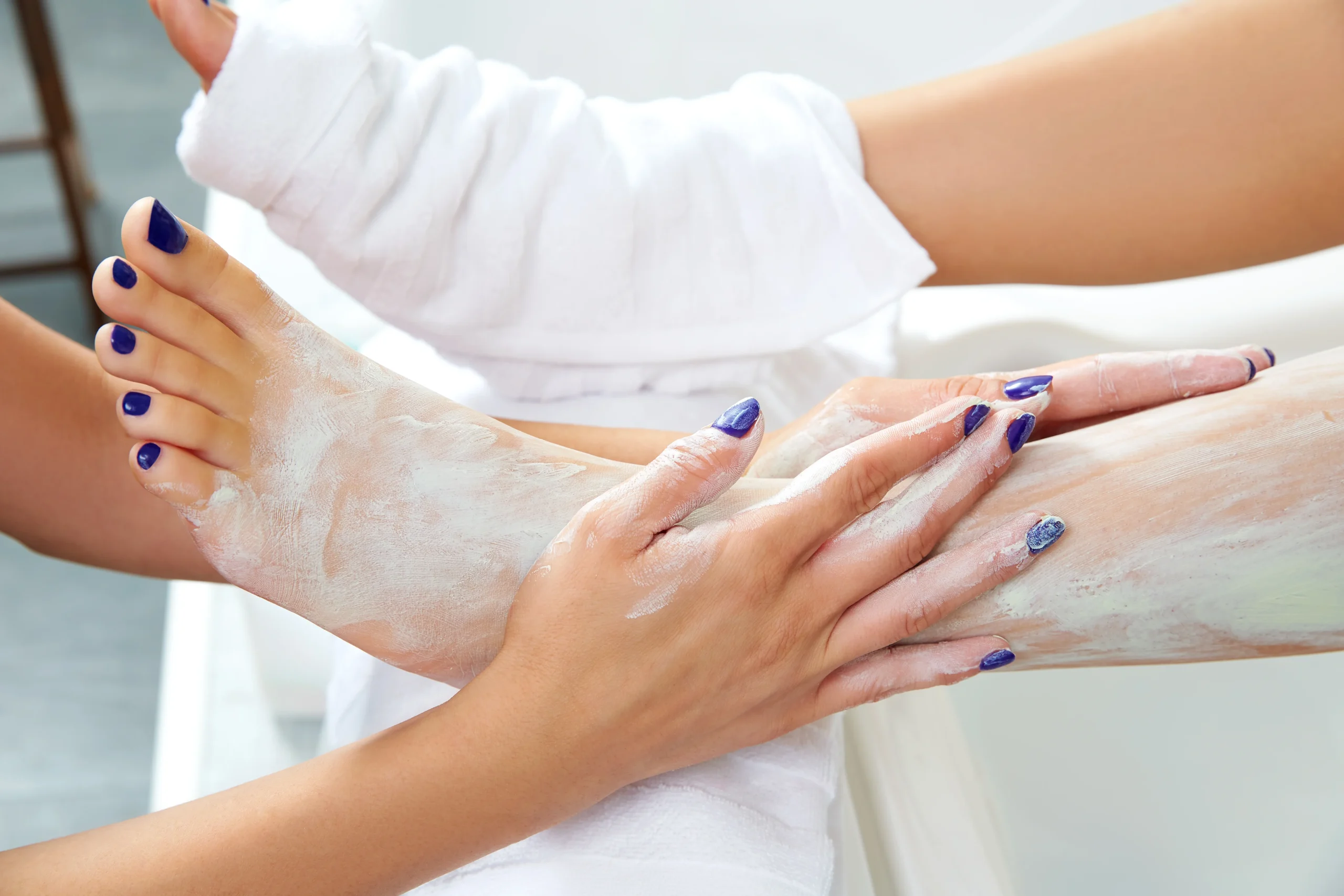
Natural Ingredients That Could Revolutionize Hand and Foot Health
Regarding hand and foot care, nature often provides the most effective solution. While various chemical-laden products are available in the market, some natural ingredients play a remarkable role in skin rejuvenation, deep hydration, and soothing treatments. These ingredients are also used as key ingredients in many international skincare brands.
In this section, we will discuss some of the key natural ingredients that can completely transform the appearance and health of the skin on your hands and feet.
The Power of Coconut Oil, Shea Butter, and Aloe Vera
These three ingredients are called the “gold standard” of natural skin care. Together, they rejuvenate the skin, moisturize it, and even prevent minor infections.
Coconut Oil
Benefits:
It contains fatty acids and vitamin E, which make the skin soft and smooth. It has natural antibacterial and antifungal properties.
Usage:
- Apply it on your feet at night and wear socks, and cracks will disappear.
- Use it as a moisturizer after scrubbing.
- You can make a homemade scrub by mixing it with sugar.
Shea Butter
Benefits:
Made from the nuts of the African shea tree, this butter is rich in vitamins A and E and fatty acids. It helps to reduce eczema, rough skin, and fine lines.
Usage:
- Massage regularly into nails and finger joints.
- Apply twice a day to cracked heels.
- Use as a base for homemade masks.
Aloe Vera
Benefits:
Aloe vera cools the skin, reduces inflammation, and provides quick relief. It is easily absorbed and keeps the skin moisturized without making it greasy.
Usage:
- Apply to sunburned skin.
- Use directly on itchy or sensitive skin.
- Mix with honey to make a cold mask.
Home Remedies vs. Marketed Products
| Factor | Home / Natural Remedies | Commercial Products |
| Ingredients | All natural, no chemicals | May contain preservatives or artificial fragrances |
| Customization | Can be made according to your needs | Limited to ready-made formulas |
| Effectiveness | Excellent for mild problems and humidity | Designed to solve specific problems |
| Cost | Affordable and DIY-friendly | It can be expensive depending on the brand |
| Shelf life | Use within a short period | Long-lasting because it contains preservatives |
| Practical advantages | Requires time and preparation | Can be used directly |
Professional Treatments That You Should Try at Least Once
While home care is essential in building a firm hand and foot routine, sometimes your skin and nails need extra care, especially when dealing with stubborn dryness, thick calluses, age-related skin changes, or recurring nail problems. That’s where professional treatments come in. These salon or spa-based treatments moisturize, exfoliate, and repair not just the skin’s surface, but also from deep within.
Whether you’re preparing for a special event or want to treat yourself to luxury, these professional hand and foot care treatments are worth considering.
Paraffin Wax, Chemical Peel, and Hydration Therapy
Paraffin Wax Treatment
This therapy, very popular in salons and dermatology clinics, involves dipping your hands or feet in hot, melted wax, wrapping them in plastic, and then wrapping them in a towel to trap the heat.
Benefits:
- Deeply moisturizes the skin and reduces roughness.
- Increases blood circulation and unclogs pores.
- Relieves joint pain and muscle tension (beneficial for people with arthritis).
- Improves skin elasticity and texture.
The wax is removed after 15-30 minutes, leaving you with smooth, soft skin.
Chemical Peel for Hands and Feet
These peels are usually made with mild acids (such as glycolic, lactic, or salicylic acid).
Results:
- Removes dead cells
- Lightens blemishes
- Smooths rough areas
- Increases collagen production
For hands, it is very effective in reducing age spots and lines. For feet, using a “peel mask” removes old skin and reveals new, soft skin within a few days.
Hydration Infusion Therapy
Some luxury spas and clinics use ultrasonic or microcurrent devices to inject hydrating serums deeply into the skin.
Who Is Best Suited For:
- Dehydrated mature skin
- Recovering from sun damage or other skin damage
- To boost hydration after seasonal changes (especially after winter)
When Should You See a Dermatologist or Esthetician?
When skin problems go beyond roughness or calluses, it is essential to seek help from a specialist.
Signs That Require Professional Advice:
- Cracked heels that bleed or hurt.
- Chronic fungal infection.
- Unexplained peeling of skin.
- Nail discoloration or thickening.
- Ingrown toenails.
- Red, swollen, or persistently dry skin.
A dermatologist can diagnose and treat deeper problems, such as eczema, psoriasis, dermatitis, or nail fungus (onychomycosis).
On the other hand, an esthetician is skilled in modern skincare therapies. They can provide a relaxing and nourishing experience through LED therapy, oxygen treatments, herbal soaks, etc.
Mistakes to Avoid When Caring for Hands and Feet
No matter how diligent you are about caring for your hands and feet, small mistakes can easily become big problems, like skin irritation, infection, or premature aging. Using the wrong products, or skipping essential steps- all of these habits can sabotage your care results.
Fortunately, once you recognize these common mistakes, you can easily change your routine to achieve healthier, smoother skin.
Let’s find out the most common mistakes and how to solve them.
Excessive washing, harsh soaps, and neglect
Excessive Hand Washing or Using Harsh Soaps
Regular hand washing is essential for hygiene, but overwashing or using alcohol-based, highly alkaline, or perfumed soaps can strip the skin of its natural oils. This can cause hands to become red, flaky, and extremely dry. Excessively hot Water or harsh scrubbing can also cause the same foot problem.
What Should Be Done:
- Use a gentle cleanser that is pH-balanced or soap-free.
- Choose products with moisturizing ingredients like glycerin or aloe vera.
- Always wash your hands or feet in lukewarm Water, not hot Water.
- After washing, moisturize your skin with a light hand/foot cream.
Neglecting Foot Care
Many people take care of their hands regularly but neglect their feet, thinking socks and shoes protect them. However, feet are exposed to friction, sweat, and pressure throughout the day, leading to fungal infections, cracked heels, and calluses.
How To Solve:
- Clean your feet thoroughly every day.
- Dry between your toes thoroughly ( to prevent fungus).
- Moisturize and exfoliate weekly.
- Check your feet and nails regularly.
Incorrect Nail Cutting and Use of Unclean Tools
Cutting Nails Too Short or Rounding The Corners
Improper nail clipping (especially on toenails) can lead to ingrown nails, infection, and pain. Excessive rubbing of fingernails or cutting of cuticles can cause skin to crack.
Correct Method:
- Always cut your nails straight across (especially on your toes).
- Leave a bit of white space, not completely flush with the skin.
- Smooth the edges with a glass or fine emery file. Not metal clippers.
- Please do not cut the cuticle; lightly wet it and gently push it back.
Sharing or Not Cleaning Equipment
Unclean or shared nail clippers, files, pumice stones, etc., can spread bacteria or fungus and quickly cause infections.
Be Careful:
- Disinfect each tool with alcohol or an antiseptic after use.
- Never share personal care tools with anyone, even within the family.
- Replace old or damaged tools regularly.
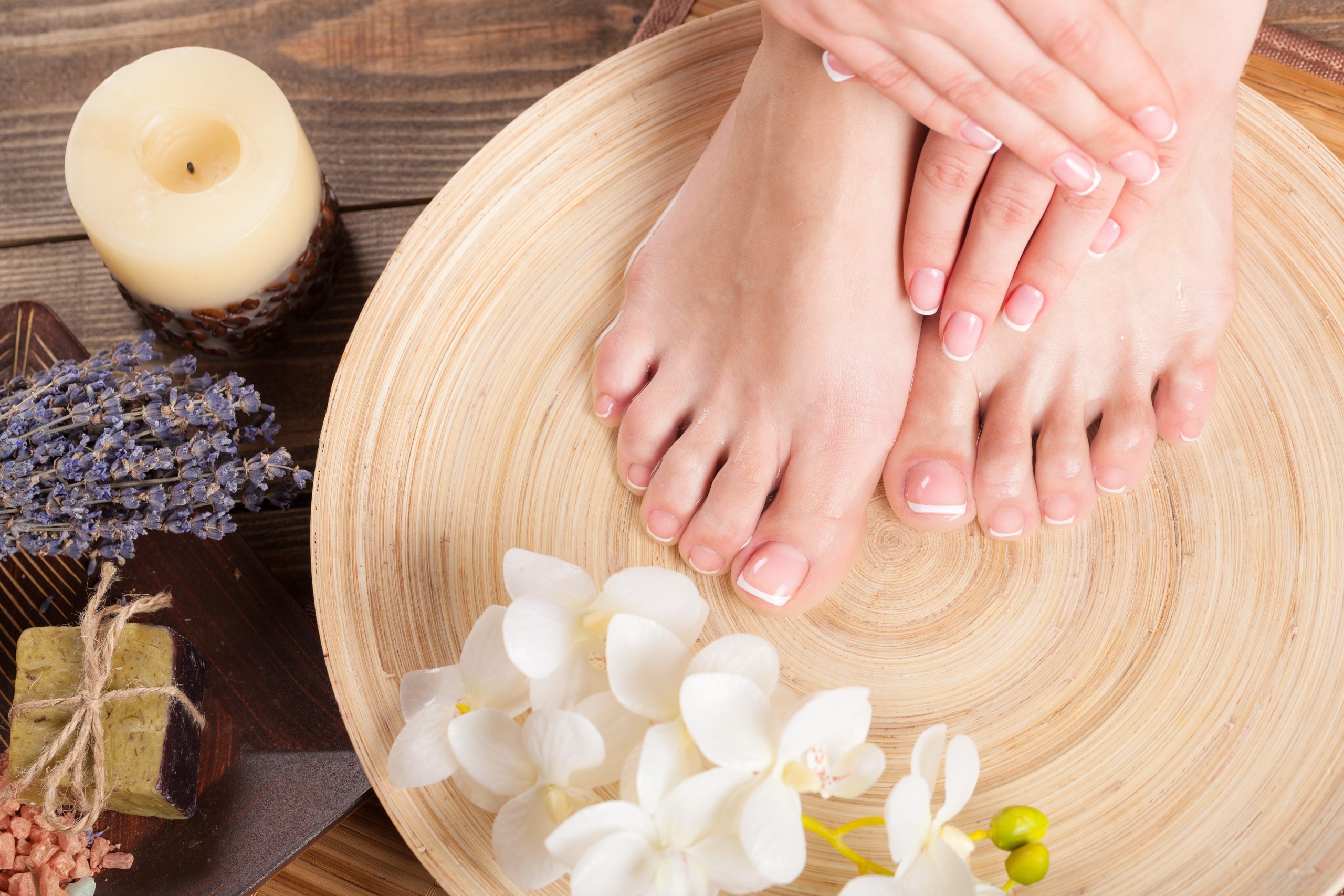
Lifestyle Habits That Are Essential for Long-Term Hand and Foot Health
Apart from your daily skincare routine or parlor treatments, your daily lifestyle plays a significant role in maintaining the health of your hands and feet. Internal care is equally important as external care because these organs are constantly exposed to friction, pressure, and environmental damage.
Let’s find out which lifestyle habits will help you maintain the health of your hands and feet in the long term.
Diet, Sleep, and Hydration
Nutritious Foods: for Skin and Nils
Your diet directly impacts the firmness and beauty of your skin. Proper nutrition strengthens your skin, keeps your nails healthy, and helps wounds heal faster.
Pay Attention to The Following Nutrients:
- Vitamin E: Protects skin from oxidative damage (almonds, seeds, spinach).
- Vitamin C: Essential for collagen production and skin repair (citrus fruits, bell peppers, strawberries).
- Biotin (Vitamin B7): strengthens nails and grows faster (eggs, almonds, avocado).
- Omega-3 Fatty Acids: keep skin hydrated and reduce inflammation (fatty fish, flaxseed, walnuts).
- Zinc: Helps heal wounds and boost immunity (meat, beans, pumpkin seeds).
Tip: Try to eat colorful fruits and vegetables every day-they are rich in antioxidants, which work against the signs of aging and environmental damage.
The importance of Water
Drinking plenty of Water keeps skin firm and supple. Not drinking enough Water can leave skin dry, cracked, and rough, especially on the hands and feet, where there are fewer oil glands.
Tips:
- Drink at least eight glasses of Water daily (may need to increase as required).
- Cucumbers, watermelon, and herbal teas also help with hydration.
Sufficient and Deep Sleep
During sleep, the body repairs cells and creates new cells. Lack of sleep can dull skin, slow nail growth, and hinder the overall rejuvenation process.
What to Do:
- Get 7-9 hours of quality sleep every night.
- Try to sleep in a quiet, dark, calm environment.
- Before bed, follow a calming routine (such as light reading, meditation, or skincare).
Product Guide: Everything You Need for Hand and Foot Care
If you don’t use the right products, your care results can be lost quickly. In addition to natural resources, they can be rapidly lost. In addition to natural methods, some scientifically formulated products make your results more substantial and permanent.
Moisturizers: Creams, Lotions, and Ointments
The skin on the hands and feet is usually thick. It easily dries out due to repeated washing, so using a dense and effective moisturizer is very important.
What You Will Find:
- Emollients: Shea butter, cocoa butter, lanolin, petrolatum – soften skin.
- Humectants: Glycerin, hyaluronic acid, and urea retain moisture in the skin.
- Occluents: Lock in moisture, especially good at night.
- Fragnce-Free or Hypoallergenic Formula: Suitable for sensitive skin.
Which Type Is Better for Whom:
- Thick cream or ointment for feet or parched hands.
- Light lotion for hands during the day.
- Special foot cream with urea or salicylic acid for calluses on the feet.
Check Out More Beauty and Makeup Articles Here

Final Thoughts: Hand and Foot Care
Hand and foot care is not just part of beauty practice—it is essential to maintaining overall health, comfort, and confidence. This comprehensive guide has discussed the scientific aspects of hand and foot care, daily and deep treatment routines, age and skin-specific advice, natural ingredients, professional treatments, common mistakes, lifestyle habits, and essential products.
By applying this information correctly, you can maintain the beauty of your hands and feet while keeping them strong and resilient.
Your hands and feet are exposed to friction, weather, and age-related stress daily, so taking conscious care of them is essential. Whether you apply moisturizer daily, exfoliate weekly, or visit the salon occasionally, consistency pays off. By creating a routine that suits your skin type and lifestyle, you will get the most benefits and prevent damage before it occurs.
Remember: Prevention is much better than a cure.
- Use sunscreen to protect your skin from the sun’s rays.
- Use nourishing products and avoid soaps or nail polish that dry out your skin.
- Consume natural ingredients and seek professional advice if you have a complex problem.
Healthy and beautiful hands and feet are a sign of self-care and respect. Giving time and attention to caring for these hardworking organs is an investment in improving one’s health and quality of life.

